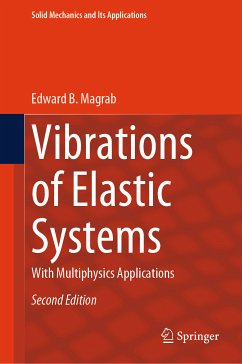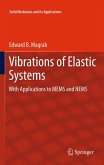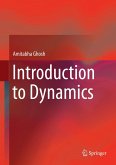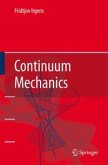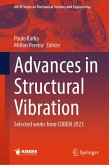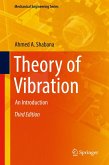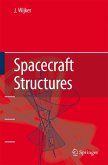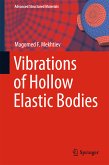

Alle Infos zum eBook verschenken

- Format: PDF
- Merkliste
- Auf die Merkliste
- Bewerten Bewerten
- Teilen
- Produkt teilen
- Produkterinnerung
- Produkterinnerung

Hier können Sie sich einloggen

Bitte loggen Sie sich zunächst in Ihr Kundenkonto ein oder registrieren Sie sich bei bücher.de, um das eBook-Abo tolino select nutzen zu können.
This book presents new topics such as Inerters in spring-mass models and attached to beams; fluid loading on beams, plates, and shells; bio-inspired vibration isolation and absorption; coupled bending and torsion of beams; beams with functionally graded materials; as well as a new chapter on the Mindlin/Timoshenko plate theory: rectangular and circular. New applications and enhancements to the previous edition include moving mass on beams; thin beams with attached pendulum; transient response of beams with in-span attachments; and shells to model blood flow in arteries.
- Geräte: PC
- ohne Kopierschutz
- eBook Hilfe
- Größe: 18.01MB
![Vibrations of Elastic Systems (eBook, PDF) Vibrations of Elastic Systems (eBook, PDF)]() Edward B. MagrabVibrations of Elastic Systems (eBook, PDF)161,95 €
Edward B. MagrabVibrations of Elastic Systems (eBook, PDF)161,95 €![Introduction to Dynamics (eBook, PDF) Introduction to Dynamics (eBook, PDF)]() Amitabha GhoshIntroduction to Dynamics (eBook, PDF)40,95 €
Amitabha GhoshIntroduction to Dynamics (eBook, PDF)40,95 €![Continuum Mechanics (eBook, PDF) Continuum Mechanics (eBook, PDF)]() Fridtjov IrgensContinuum Mechanics (eBook, PDF)169,95 €
Fridtjov IrgensContinuum Mechanics (eBook, PDF)169,95 €![Advances in Structural Vibration (eBook, PDF) Advances in Structural Vibration (eBook, PDF)]() Advances in Structural Vibration (eBook, PDF)137,95 €
Advances in Structural Vibration (eBook, PDF)137,95 €![Theory of Vibration (eBook, PDF) Theory of Vibration (eBook, PDF)]() Ahmed A. ShabanaTheory of Vibration (eBook, PDF)73,95 €
Ahmed A. ShabanaTheory of Vibration (eBook, PDF)73,95 €![Spacecraft Structures (eBook, PDF) Spacecraft Structures (eBook, PDF)]() J. Jaap WijkerSpacecraft Structures (eBook, PDF)217,95 €
J. Jaap WijkerSpacecraft Structures (eBook, PDF)217,95 €![Vibrations of Hollow Elastic Bodies (eBook, PDF) Vibrations of Hollow Elastic Bodies (eBook, PDF)]() Magomed F. MekhtievVibrations of Hollow Elastic Bodies (eBook, PDF)113,95 €
Magomed F. MekhtievVibrations of Hollow Elastic Bodies (eBook, PDF)113,95 €-
-
-
Dieser Download kann aus rechtlichen Gründen nur mit Rechnungsadresse in A, B, BG, CY, CZ, D, DK, EW, E, FIN, F, GR, HR, H, IRL, I, LT, L, LR, M, NL, PL, P, R, S, SLO, SK ausgeliefert werden.
- Produktdetails
- Verlag: Springer International Publishing
- Seitenzahl: 516
- Erscheinungstermin: 24. Juni 2024
- Englisch
- ISBN-13: 9783031521027
- Artikelnr.: 71167776
- Verlag: Springer International Publishing
- Seitenzahl: 516
- Erscheinungstermin: 24. Juni 2024
- Englisch
- ISBN-13: 9783031521027
- Artikelnr.: 71167776
- Herstellerkennzeichnung Die Herstellerinformationen sind derzeit nicht verfügbar.
Edward B. Magrab is Emeritus Professor in the Department of Mechanical Engineering at the University of Maryland at College Park. He has extensive experience in analytical and experimental analysis of vibrations and acoustics, served as an engineering consultant to numerous companies, and authored and co-authored books on vibrations, environmental noise control, instrumentation, integrated product design, advanced engineering mathematics, statistics, MATLAB®, and Mathematica®. He is a Life Fellow of the American Society of Mechanical Engineers.
